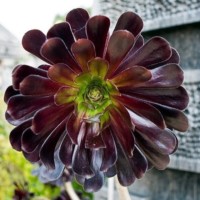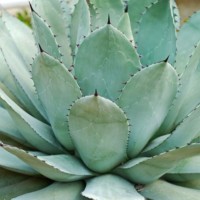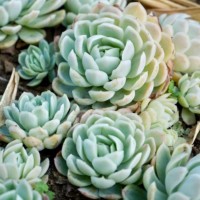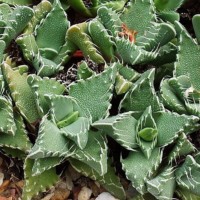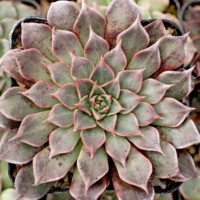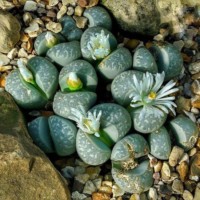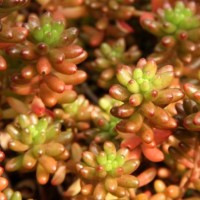You’re exploring different types of succulents and learning their specific needs. But there’s one problem — sometimes plants are just labeled “succulent varieties” at the store, or you get some cuttings from a friend who doesn’t know their name. Identifying succulents can be challenging — so many
Succulent Identification
In this Post We'll Cover:
{Please note, some links in this post may be affiliate links to sites that pay me a small commission if you click on the link and make a purchase. This commission is at absolutely no cost to you. I only recommend products and companies that I have worked with and truly love! ~Kat}
Succulent Identification – Why It Matters

When you love succulents, there comes a point when it’s important to know them by name. As I have argued before, proper succulent identification can literally be the difference between life and death! Different types of succulents may share the same common name or a similar appearance with very different characteristics. Sometimes the difference is in their winter hardiness. A mistake in identifying succulents could lead to dead plants, killed by the cold. However, some succulents are toxic to pets and children. Sedum morganianum is perfectly safe for pets and small children, but Euphorbia myrsinites is highly toxic! Take care to learn how to recognize what succulents you have to ensure the
Recognizing Different Types of Succulents

Any plant that stores water in its leaves, stems or roots is classified as a succulent. Many varieties look wildly different from one another. But some types of succulents look very similar. Echeveria and Sempervivum are two genera that are often confused for one another. Both share the same common name hens and chicks. They look similar, with each plant forming a large rosette. They reproduce in a similar fashion, each forming offsetsSucculent offsets are the baby succulents that form at the b... that grow beside the primary rosette. Yet one thrives at temperatures well below zero and the other dies with a single freeze.
Over time, you will become able to recognize more different types of succulents just by sight. Even if you cannot tell a Sempervivum from an Echeveria now, if you continue to look and seek the distinctions, soon you’ll recognize their differences. Sounds weird, I know. But just as you know your own child, even when they’re in a sea of other kids… Or you know your own cat, separate from all others… Recognizing small distinctions is a talent we all share. We just use this talent for different things. Maybe you can spot the difference between muscle cars of the 1960s. I can tell between a wolf and a coyote. Some people instantly distinguish between a Cabernet of different vintages or identify
You can see one clear distinction between Sempervivum and Echeveria in the photo above. Do you see the many, tiny hairs all along the leaf margin of the sempervivum? Those are ciliate hairsCiliate (SILL-ee-uht) hairs are a fringe of tiny hairs along... More. They collect dew for the plant in its arid habitat. Sempervivum
Identifying Succulents – Note Characteristics

How to distinguish between Aeonium and Echeveria is another common question in succulent identification. Some Aeonium also
To distinguish between different types of succulents, look for the details. As we’ve seen, some varieties have ciliate hairs along the leaf margins, others have smooth leaves. Look also for the leaf thickness. In general, Echeveria
- Leaf – shape, size and thickness
- Color – of leaves, flowers or stems
- Markings or bumps on the leaves
- Flower – shape, color, number of blooms and petals per bloom
- Stem – color, texture, length
- Ciliate hairs
- Epicuticular wax
- Spikes, spines or smooth
- Overall size and shape of the plant
- Cold hardiness*
- Growing conditions*
*Although learning the succulent’s cold hardiness and how to care for it are important reasons for identifying succulents, you can also use the information in your search for its name. For instance, if you live in the Midwest and have a rosette succulent growing outdoors year-round, you can rule out many lookalikes that die if they freeze.
Succulent Identification Strategies

There are a number of good, succulent identification strategies open to you. In today’s high tech world, consulting other gardeners is still the best way to learn. Take a good photo of the succulent you want to identify. Be sure to capture different characteristics listed above, or include those you know in your description to go with the photo. People who work at the local nursery are happy to look at your photo to help you.
Join My Facebook Group!

Join my Facebook community dedicated to succulents and succulent lovers. It is a private group, but free to join and participate in. Our members include experts and newbies alike, and we would welcome you warmly! Identifying succulents and sharing growing tips is a big part of what we do. Post your photos and ask your questions. We’re all learning, and some responses will be incorrect. But they are nearly always informative! 🙂 When you get a succulent name, Google it, and check out the images returned. Do most look like your plant? If so, investigate further to learn the details that help to determine the exact name. Join us, and become inspired!
Contact me! Send me an email, or reach out to The Succulent Eclectic on Facebook and include a photo and description of your succulent. I’ll be happy to help! Identifying specific succulent cultivars
Succulent Identification – There’s an App for That

Identifying succulents? Yep – there’s an app for that! Picture This is an impressive plant identification app for your smartphone. The interface is simple and beautiful. Take a photo of the succulent you want to id. Keep it inside the screen’s viewfinder and snap your shot. In a heartbeat, the app returns the name and another image of the plant you want
The Picture This app is now (updated June, 2022) $19.99/ year, with a 7-day FREE trial to see if you like it, first. I am impressed with it. I snapped photos of plants that I knew. When each was correctly identified, I tried different types of succulents I didn’t have a name for. I’m satisfied that the app named them correctly — very cool! And it works for many, many kinds of plants — not just succulent identification.
Succulent Identification Chart
Here’s the Succulent identification chart I promised you. For more information on the genus pictured, hover over it and you’ll see the name. Click the image to go to a detailed post all about growing that type of succulent:
I hope this post will help you with your succulent identification hunt! If you’d like a larger resolution version of the succulent identification chart, just send me an email. And I hope I’ll see you soon in our Facebook forum!
If you have any questions about identifying succulents — or anything else to do with these charming plants! — please leave a comment and I will get right back to you.
You can do this!
P.S. For more great succulent information, please subscribe to The Succulent Eclectic and
P.P.S. Why not join my Facebook Group for succulent lovers? We talk about succulent care, propagation, succulent identification, and design. It’s a warm and welcoming group that would love to meet you!


